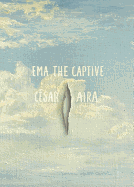
Ema, the Captive, Cesar Aira's second novel (published in Argentina in 1981), defies traditional genre categories. But, then again, so do most of Aira's novels. His The Literary Conference detailed the attempts of a mad scientist to clone novelist Carlos Fuentes in hopes of achieving world domination, while An Episode in the Life of a Landscape Painter served as an exegesis on Alexander von Humboldt's scientific theories.
Ema, the Captive concerns the journey of a woman of indeterminate origins in 19th-century southern Argentina. The story is episodic, told through a series of vignettes: Ema travels with a military caravan to a fort in the wilderness; Ema becomes the concubine of an Indian chieftain; and Ema, at the end, transforms into an unlikely entrepreneur. These moments in Ema's life provide the structure by which Aira explores his themes of time, perception and mystery.
Like fellow Argentine Jorge Luis Borges's writing, Aira's continually shifts and unwinds itself. The literal and the metaphorical blend, and philosophical digressions turn out to be a narrative thrust themselves. If all this seems a bit much--and at times it can be--Aira redeems himself with prose that can stun. On the cry of a pheasant, Aira writes: "Inevitably, it brings to mind the solidity of gold. One wonders how it is possible for the pheasant to remain afloat on the flimsy surface of the grass and not sink into the planet like a stone in water." And this is Aira describing the daily rhythm of the Indian tribe Ema lives with: "They seemed to be living solely to prove that fixed moments do not exist. Nature closed its valves for them and presented a single continuous edge, firm and smooth."
Ema, the Captive challenges the reader on every page. And rewards the reader just as often. --David Martin, freelance writer

